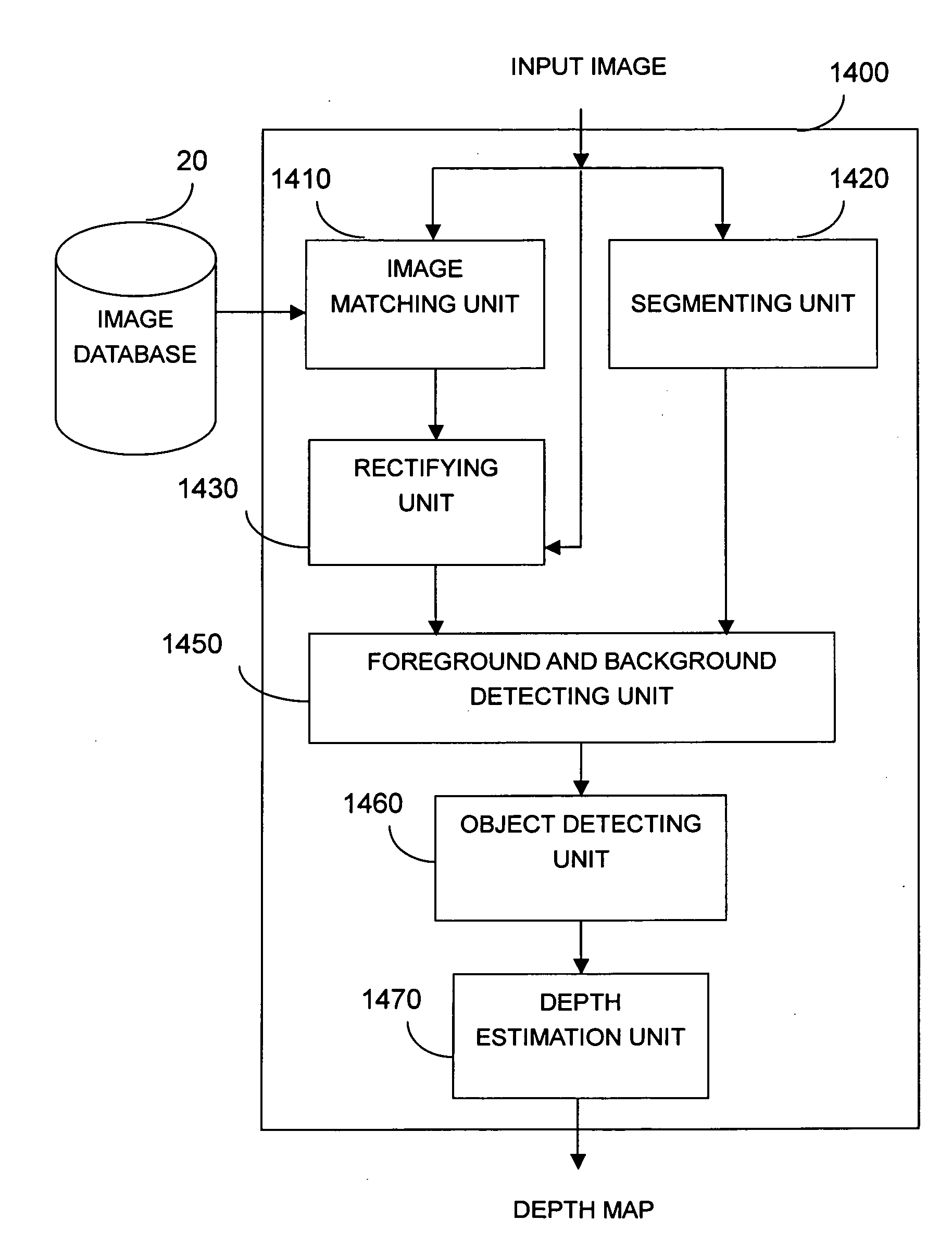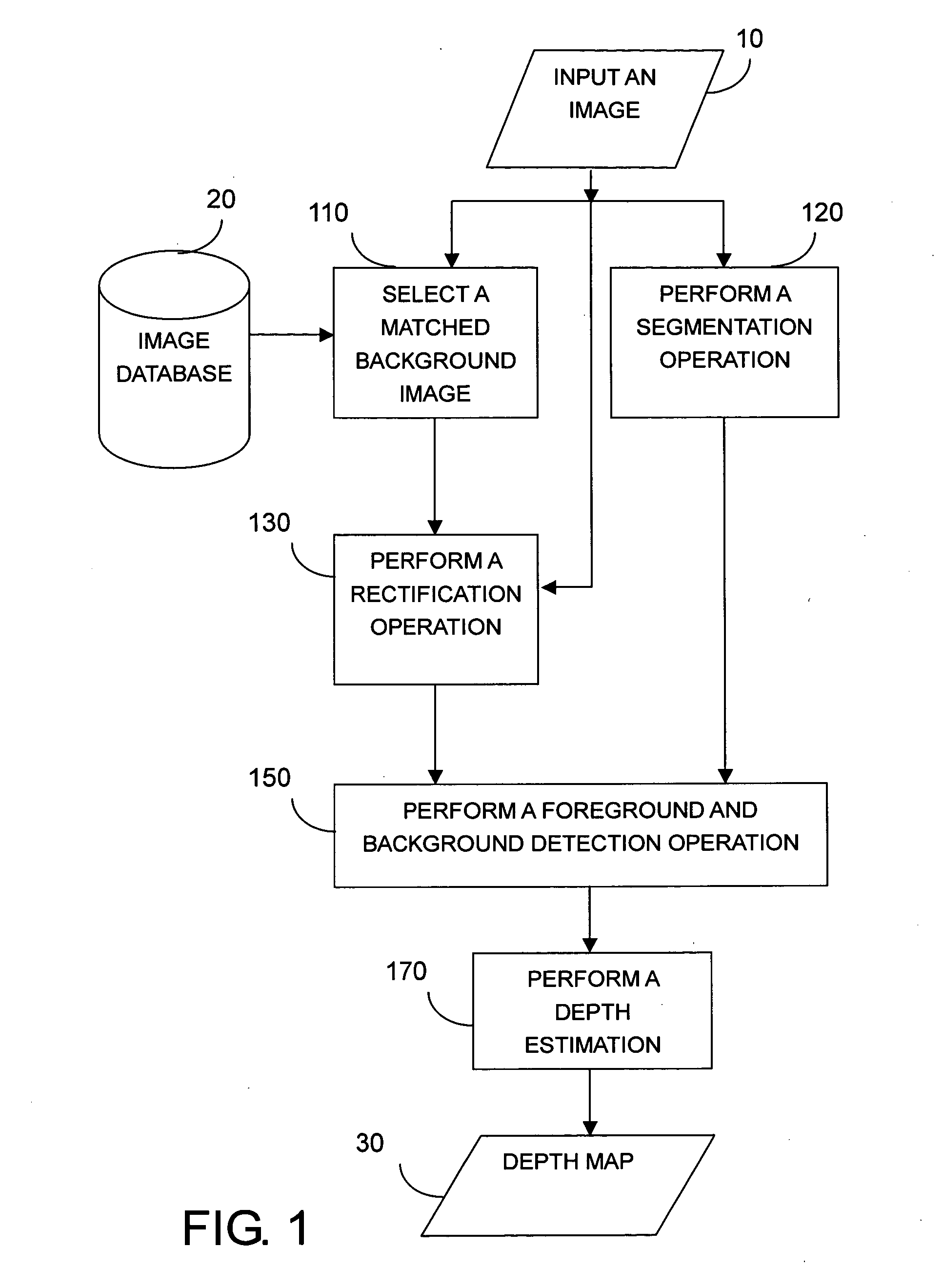Example-Based Two-Dimensional to Three-Dimensional Image Conversion Method, Computer Readable Medium Therefor, and System
a conversion method technology, applied in the field of two-dimensional to three-dimensional image conversion methods, can solve the problems of limited application field of stereoscopic display, error in depth prediction, and important way for generating 3d conten
- Summary
- Abstract
- Description
- Claims
- Application Information
AI Technical Summary
Problems solved by technology
Method used
Image
Examples
first exemplary embodiment
[0043]FIG. 1 is a flow chart showing an image conversion method of converting a two-dimensional image into three-dimensional image content according to a first exemplary embodiment consistent with the invention. As shown in FIG. 1, an input two-dimensional image 10 is to be converted into the three-dimensional image content, which is obtained based on a depth map 30. For example, the three-dimensional image content includes the depth map 30 of the two-dimensional image 10 plus the two-dimensional image 10. One of ordinary skill in the art can determine the output format of the three-dimensional image content according to the actual requirement. Since the image conversion method is based on example images, at least one image database 20 has to be provided. The image database 20 may be a digital image database including a plurality of example background images serving as a reference for depth information comparison.
[0044]As shown in step 110, one of the example background images of th...
second exemplary embodiment
[0049]FIG. 2 is a flow chart showing an image conversion method of converting a two-dimensional image into three-dimensional image content according to a second exemplary embodiment consistent with the invention. The difference between this exemplary embodiment and the first exemplary embodiment of FIG. 1 is that the foreground patch group may be further processed after the step 150 of performing the foreground and background detection operation. Thus, the requirement of the reasonable and smoother contour of the real object represented by each patch can be satisfied to achieve better visual effects. As shown in FIG. 2, step 260 is performed after the step 150 of performing the foreground and background detection operation. In step 260, an object detection operation is performed on the foreground patch group to determine whether there is any patch of the foreground patch group satisfying at least one object feature, and a boundary smoothing process is performed on each patch satisfy...
PUM
 Login to View More
Login to View More Abstract
Description
Claims
Application Information
 Login to View More
Login to View More - R&D
- Intellectual Property
- Life Sciences
- Materials
- Tech Scout
- Unparalleled Data Quality
- Higher Quality Content
- 60% Fewer Hallucinations
Browse by: Latest US Patents, China's latest patents, Technical Efficacy Thesaurus, Application Domain, Technology Topic, Popular Technical Reports.
© 2025 PatSnap. All rights reserved.Legal|Privacy policy|Modern Slavery Act Transparency Statement|Sitemap|About US| Contact US: help@patsnap.com



